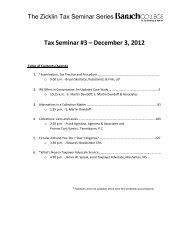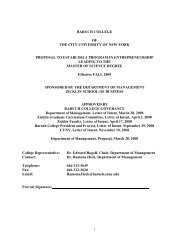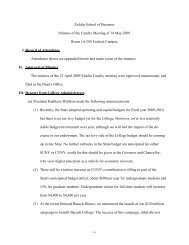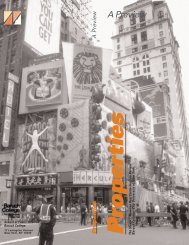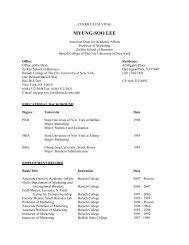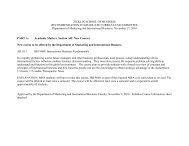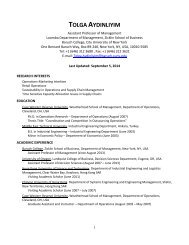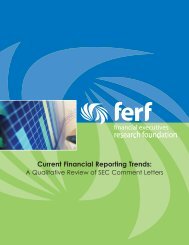Valueat-Risk
Forecasting the Return Distribution Using High-Frequency Volatility ...
Forecasting the Return Distribution Using High-Frequency Volatility ...
- No tags were found...
You also want an ePaper? Increase the reach of your titles
YUMPU automatically turns print PDFs into web optimized ePapers that Google loves.
1 Introduction<br />
Until recently, the predominant approach in modeling the conditional distribution of returns was<br />
represented by the ARCH-GARCH model proposed by Engle (1982) and Bollerslev (1986) and<br />
followed by a myriad of sophisticated refinements to the baseline model. The GARCH model<br />
introduces time variation in the conditional distribution largely through the conditional variance,<br />
and has been successful in explaining several empirical features of asset returns, such as fat tails<br />
and the slowly decaying autocorrelation in squared returns. While the GARCH model assumes a<br />
parametric form for the latent variance of returns, the recent availability of high-frequency data<br />
has sparked a growing literature of volatility estimators that do not require researchers to specify<br />
a model. The so-called realized volatility literature (see Andersen and Bollerslev, 1998, Andersen<br />
et al., 2001a and 2001b among others) uses high-frequency data to proxy for the volatility of lower<br />
frequency returns, for instance, summing intra-day squared returns to estimate the daily variance.<br />
In this way, the latent variance process is observable and measured by realized volatility which<br />
facilitates the task of modeling and forecasting using time series models. Several recent papers<br />
incorporate these measures within a parametric volatility model for the dynamics of daily returns<br />
(see Shephard and Sheppard, 2010, Brownlees and Gallo, 2010, Maheu and McCurdy, 2011, and<br />
Hansen et al., 2011).<br />
In this paper we propose to relate the realized volatility measures and returns by assuming that<br />
these measures represent the driving force for the variation of the quantiles of the cumulative<br />
multi-period return distribution. In particular, the flexibility of the quantile regression model (see<br />
Koenker and Bassett, 1978) allows to consider several specifications that include smoothed versions<br />
of the realized volatility measures, the return standardized by realized volatility and nonlinear<br />
transformations of the return that are considered to account for the leverage effect. The fact that<br />
the parameters of the quantile regression model are specific to each quantile level allows the variables<br />
to have heterogeneous effects in different parts of the return distribution. In addition, the quantile<br />
model does not require to specify a distribution for the error as it is instead the case for GARCH<br />
models or for models based on realized volatility measures. Hence, the flexibility in choosing the<br />
most appropriate explanatory variables, the adaptability of the effect of these variables at each<br />
quantile level, and the distribution-free character of the method are the three characteristics that<br />
distinguish our approach from the models recently proposed in the literature that related realized<br />
volatility and returns. The application of quantile regression to modeling and forecasting financial<br />
returns has experienced a recent surge of interest due to the emergence of risk management and its<br />
focus on forecasting the return quantiles (see Engle and Manganelli, 2004, Xiao and Koenker, 2009,<br />
Zikes, 2010, and Gaglianone et al., 2011). Another aspect that distinguishes our paper is the method<br />
adopted to evaluate the performance of quantile and distribution forecasts. A common loss function<br />
used in the comparison of density forecasts is the logarithmic score rule, which rewards forecasts that<br />
have higher density at the realization of the variable being forecast (see, among others, Bao et al.,<br />
2007, Amisano and Giacomini, 2007, and Maheu and McCurdy, 2011, and Shephard and Sheppard,<br />
2010 for two applications in the realized volatility literature). Although this is certainly a relevant<br />
criterion to consider, it does not reward forecasts that assign high probabilities to values close to<br />
2



